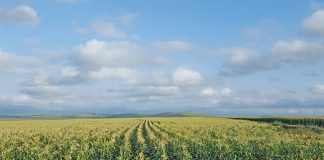
Photo: Supplied
Agritech is a growing industry, and it’s time for today’s farmers to harness its potential for improved decision-making, production, access to markets, and new investment opportunities.
1. Smart soil health
PES Technologies has developed a tool that turns soil testing into a five-minute process. Instead of soil samples being sent off to a laboratory, the PES device works as a point-of-care diagnostics machine does in the medical field.
It’s hand-held and battery-powered, and controlled using a smartphone app. It reports on a range of biological, chemical and physical soil-health indicators, including microbial biomass and soil organic matter content.
You can analyse soil samples there and then on the land without any sample preparation. In this way, you’ll have a better idea of the right products to use to balance the soil and create the best possible conditions for plants to thrive.
2. Cloud-based data platforms
Cloud-based platforms such as Continuum Ag’s TopSoil Tool are able to combine soil health data and deliver unbiased recommendations to provide farmers with direction and freedom to make decisions that drive higher yield and higher profit along with environmental sustainability.
Farmers can create custom recommendation algorithms that factor in existing soil biology and assess opportunities to improve regenerative farm management.
From a management perspective, farmers can use the data to review anything from test results to soil organic carbon levels, biological activity, and plant-available nutrients, as well as create scouting reports and track as-applied data while in the field.
3. Hand-held bionutrient spectrometer
This is one for both farmers and consumers: a bionutrient spectrometer is a hand-held device that measures the nutrient density in food and crops, along with carbon in the soil. Buyers will be able to test crops before purchase.
The widespread adoption of this kind of technology should also shift the drivers governing crop production; if retailers have the ability to demand a certain quality from their suppliers, growers will be incentivised to improve the quality of their produce (which can only be achieved with regenerated, healthy soils).
4. Satellite crop monitoring
Satellite imagery can help you gain big data to manage multiple fields, cut costs on resources and make reliable decisions. Images can be colour-synthesised to identify crop growth, soil erosion, pest infestations, nutrient deficiencies, diseases or irrigation issues. Farmers can create variable rate application maps for differentiated seed planting and fertilising.
5. Drone imagery
Where satellite-based data groups crops together, drone-powered farm insights can provide a higher level of detail. In fact, drone-based data is superior to on-foot inspections, as drones can use thermal and multispectral imagery to deliver data at a level unseen to the naked eye.
High-resolution drones are thus the recommended data source for the purposes of precision farming for specialty crops. Combined with artificial intelligence analysis, drone imagery can provide actionable data on plant health almost in real time, so that farmers can optimise and protect their yields.
You can’t manage what you can’t measure
With the rapid proliferation of smart technology, there’s a great deal more that farmers can measure, and thus more they can manage to improve their operations, productivity and profitability.
Armed with this data in the palm of your hand (quite literally), you can use the technology to increase yield and reduce cost. Failure to do so is, quite frankly, the equivalent of using a Nokia 3310 in 2023.
Visit regenz.co.za, or zylemsa.co.za










